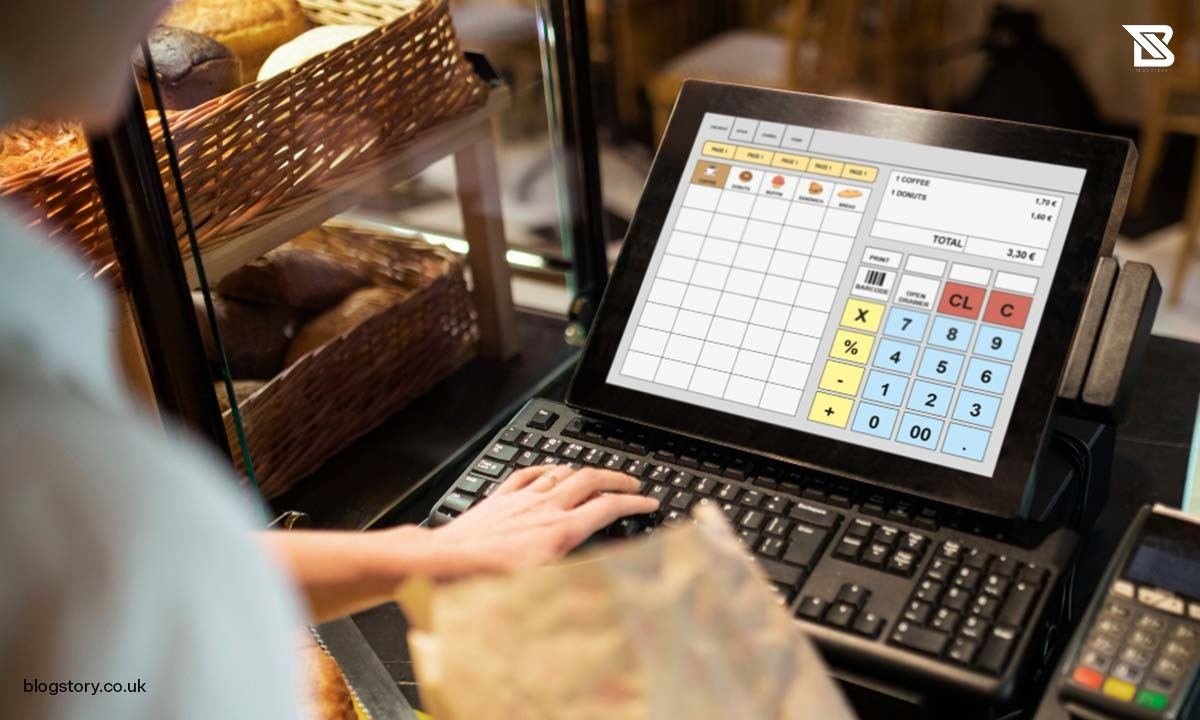
EPOS Software Buyer’s Guide
For modern businesses, an Electronic Point of Sale (EPOS) system serves as the epicenter for managing essential operations. However, the myriad of options can overwhelm buyers struggling to determine the best fit for their specific business needs and workflows.
This comprehensive buyer’s guide aims to simplify the evaluation process with actionable insights on key factors to consider before selecting an EPOS solution.
Start By Understanding Your Requirements
As the foundation for decision-making, clearly define your business requirements and priorities:
- Consider your business model and industry sector. For example, hospitality businesses may focus on order and table management capabilities while retailers prioritize robust inventory management.
- Analyze your sales process and existing workflows and tools. How do you currently handle payments, track customers, manage supplies?
- Evaluate your omnichannel strategy. Do you sell exclusively offline or online? Through a unified commerce approach? Identify EPOS support for your existing and future sales channels.
- Project growth plans for the coming three to five years. Will you expand to new locations or markets? Introduce new product lines? The right EPOS provides scalable, flexible growth support.
Thoroughly understanding your current operations and future ambitions guides intelligent feature prioritization for an EPOS tailored to your workflows.
Assess Needed Capabilities by Industry
While core POS functionality remains largely consistent, certain business types require specialized enhancements. Evaluate industry-specific capabilities:
Retail EPOS Software:
- Advanced inventory insights
- Supply chain integration
- Customer relationship management (CRM)
- Queue busting
- Click and collect
Restaurant EPOS Systems:
- Table/order management
- Online ordering takeaway /delivery management integrations
- Menu/recipe management
- Kitchen display systems (KDS)
Hospitality EPOS Solutions:
- Property management system (PMS) connectivity
- Housekeeping task assignment/tracking
- Group/event booking management
Beyond specialized features, optimize EPOS software adaptability to support emerging channels like self-checkout or digital wallets through open APIs and third-party integrations.
Prioritize Simplicity and Usability
An intuitive user interface minimizes staff training requirements and ensures consistent adoption across your organization. Consider both visual design and navigational elements:
- Clean, uncluttered screens streamline navigation and transactions.
- Touchscreen layouts allow quick tap-based interactions.
- User-friendly features like search bars, favorites tabs, and manual data input minimization simplify workflows.
- Access comprehensive role-based permissions to control staff system access and capabilities.
While assessing the manager interface, emphasize clear visibility into essential analytics for data-driven decisions on pricing, inventory, staffing and more.
Additionally, mobile compatibility enables transactions and inventory management from anywhere via tablet or smartphone applications to boost convenience.
Get The Right Hardware
Robust EPOS software means little without properly functioning hardware for capturing transactions, displaying data and enabling peripheral connections.
Key hardware considerations include:
- Reliability and durability – Quality components sustain heavy use without failure.
- Processing capabilities and connection options – Integrate scanners, printers, tablets and more.
- Power options – Battery, electric, mobile to support station flexibility.
- Receipt formatting – Tailor branding, layouts and call to actions.
- Warranties and support – Access affordable repairs/replacement.
While some EPOS providers sell specialized proprietary hardware, many integrate with third-party devices. Compare capabilities and costs to determine the optimal configuration aligned with your budget.
Secure Payment Handling
As payments grow increasingly cashless and mobile, secured payment processing proves paramount.
Key features include:
- Omnichannel payment acceptance – In-person, online, mobile, and more.
- Contactless payments – One tap transactions via digital wallets or cards.
- Tokenization and encryption – Protect sensitive card data in compliance with standards like PCI DSS.
- Fraud prevention – Leverage AI and analytics to identify suspicious patterns.
- Tip adjustments – Enable post-payment tipping functionality.
- Signature capture – Store customer signatures for select transactions.
- Partial/split payments – Accept multiple payment types across one transaction.
Enhanced payment handling boosts customer convenience, trust, and likelihood of repeat business.
Hassle-Free Tax Handling
Calculating multiple sales tax rates across regions quickly grows complicated, eating up precious time better spent on revenue-driving tasks. Simplify tax with automated features for:
- Tax table integration – Automatically apply appropriate rates.
- Tax-inclusive pricing – Built-in tax calculations for item prices.
- Tax exemption management – Streamline tax-free documentation.
- Custom tax rules – Configure specialized locale settings.
- Reporting – Detailed logs for reconciliation and auditing needs.
By extracting the complexities of tax liabilities, EPOS systems grant freedom to focus on business growth.
Omnichannel Inventory Visibility & Optimization
Inventory is the lifeline of retail and hospitality businesses. An EPOS ordering system centralizes monitoring and management via:
- Real-time visibility – Instantly track inventory counts across all locations.
- Auto-sync – Maintain updated inventory across online/offline channels.
- Reorder notifications – Alerts to replenish stock before outs.
- Transfer stock – Seamlessly move inventory between locations.
- Supplier integration – Streamline restocking/payments through connected procurement.
- Recipe/ingredient tracking – Granular oversight in restaurants/bars.
- Analytics – Identify fast/slow-moving items, waste reduction opportunities and ideal par levels.
With holistic inventory oversight capabilities, efficiently match supply to rising customer demand.
Harness the Power of Data
Transform payments, orders, inventory and more from disjointed data points into actionable business insights via robust reporting.
Key analytical capabilities:
- User-friendly dashboard – Visually track KPIs like sales, revenue, foot traffic.
- Custom reporting – Tailor reports to your specific planning needs.
- Scheduled reports – Automatic data exports to inform decisions.
- Customer analytics – Identify peaks, purchase trends, demographics.
- Menu performance – Assess bestsellers, profits, adjustments.
- Cash flow analysis – Reconcile transactions and predict future needs.
Uncover hidden opportunities to attract customers, propel growth and outperform competitors through intelligence derived from integrated analytics tools.
Enhance Customer Relationships
Expanding reach requires deepening existing customer connections through loyalty programs, personalized promotions and CRM-supported retention initiatives.
Core CRM-linked features consist of:
- Centralized customer profiles – Consolidate transaction history, order tendencies, contact information.
- Promotions engine – Create and manage customized deals and incentives by customer tier.
- Loyalty programs – Configure point earning models to reward repeat business.
- Customer communications – Email/SMS capabilities to nurture relationships.
- Sentiment tracking – Capture ratings, reviews and survey feedback.
- Third-party CRM integrations – Connect platforms like Mailchimp to unify data.
Strengthening customer relationships beyond the point of transaction leads to improved retention, higher sales and brand advocacy.
Evaluate Support Systems
Even intuitive software hits snags occasionally. Understand available support systems prior to purchase including:
- Onboarding – Look for platform-specific onboarding programs to guide setup.
- Technical support – Review response times, channels (email/phone/chat/in-person), availability across time zones.
- Troubleshooting resources – FAQs, help centers, video tutorials.
- Ongoing success management – Ask about post-launch check-ins and optimization.
- Community forums – Collect insights from fellow users.
Prioritizing learning and troubleshooting assistance ensures you fully leverage advanced functionalities while minimizing business disruptions.
Moving Forward With EPOS
Transitioning to an integrated, omnichannel-ready EPOS solution allows businesses to break free from outdated legacy systems and siloed operations.
From unified commerce to powerful analytics tools, modern options help retailers, restaurants and hospitality providers consolidate tasks, gain insights to guide growth opportunities, and enhance both customer as well as employee experiences.
While selecting the right software is highly specific to your current and future needs, following this comprehensive buyer’s guide will empower intelligent decision-making in aligning with an EPOS system that maximizes operational efficiency and drives revenue now as well as years into the future.
You May Like Also:













“Wireless earbuds for long flights”
Transfer vhs tapes
A great post without any doubt.
Thank you for sharing indeed great looking !
Thank you so much for sharing this wonderful post with us.
Thank you so much for sharing this wonderful post with us.
Nice i really enjoyed reading your blogs. Keep on posting. Thanks
The information shared is of top quality which has to get appreciated at all levels. Well done…
A great post without any doubt.
Nice i really enjoyed reading your blogs. Keep on posting. Thanks
Nice i really enjoyed reading your blogs. Keep on posting. Thanks
Thank you for sharing indeed great looking !
Nice i really enjoyed reading your blogs. Keep on posting. Thanks
The information shared is of top quality which has to get appreciated at all levels. Well done…
A great post without any doubt.
A great post without any doubt.
The information shared is of top quality which has to get appreciated at all levels. Well done…
Thank you so much for sharing this wonderful post with us.
Nice i really enjoyed reading your blogs. Keep on posting. Thanks
Thank you so much for sharing this wonderful post with us.
The information shared is of top quality which has to get appreciated at all levels. Well done…
Thank you for sharing indeed great looking !
Thank you so much for sharing this wonderful post with us.
Nice i really enjoyed reading your blogs. Keep on posting. Thanks
Thank you for sharing indeed great looking !
Thank you so much for sharing this wonderful post with us.
Totally agree with your arguments, well said.
Thank you for sharing indeed great looking !
That is a very good tip particularly to those new to the blogosphere. Short but very precise information… Thanks for sharing this one. A must read article!
A great post without any doubt.
Introducing to you the most prestigious online entertainment address today. Visit now to experience now!
Greetings! Very helpful advice within this post! It’s the little changes that will make the most significant changes. Many thanks for sharing!
Hello everyone, it’s my first pay a visit at this website, and paragraph is genuinely fruitful designedfor me, keep up posting these types of articles.my blog post; Tacoma Farms CBD Oil
This article is a true game-changer! Your practical tips and well-thought-out suggestions hold incredible value. I’m eagerly anticipating implementing them. Thank you not only for sharing your expertise but also for making it accessible and easy to apply.
https://iziswaps.site/
https://iziswaps.site/
When I originally commented I clicked the -Notify me when new comments are added- checkbox and now each time a comment is added I get four emails with the same comment. Is there any way you can remove me from that service? Thanks!
https://iziswaps.site/
It’s laborious to seek out educated people on this topic, however you sound like you realize what you’re speaking about! Thanks
Thanks for your helpful post. As time passes, I have come to be able to understand that the particular symptoms of mesothelioma are caused by the particular build up associated fluid between the lining of your lung and the breasts cavity. The infection may start within the chest location and multiply to other parts of the body. Other symptoms of pleural mesothelioma cancer include weight reduction, severe inhaling and exhaling trouble, nausea, difficulty taking in food, and bloating of the neck and face areas. It ought to be noted that some people living with the disease never experience almost any serious indicators at all.
I simply wanted to convey how much I’ve gleaned from this article. Your meticulous research and clear explanations make the information accessible to all readers. It’s abundantly clear that you’re committed to providing valuable content.
Tytiania Sargent OnlyFans Leaks ( https://urbancrocspot.org/the-real-bombshell-mint-only-fans-mega-link/ )
In my opinion that a property foreclosures can have a important effect on the debtor’s life. Home foreclosures can have a Several to several years negative influence on a client’s credit report. A new borrower who has applied for a mortgage or almost any loans as an example, knows that the particular worse credit rating will be, the more challenging it is to acquire a decent loan. In addition, it could possibly affect any borrower’s ability to find a respectable place to lease or hire, if that gets the alternative property solution. Thanks for your blog post.
Retrieved Could 28, 2017 – through PR Newswire.
ahrareileak, leaked, leakshttps://www.start.gg/user/dc3e79b8
https://s3.amazonaws.com/catering-5/food-service-for-special-occasions.html
Introducing to you the most prestigious online entertainment address today. Visit now to experience now!
A great post without any doubt.
I appreciate the thorough research and attention to detail evident in this blog post. Well done!
Would you be fascinated in trading links?
http://www.fiverr.com/s/Eg2Y0G9
http://www.fiverr.com/s/Eg2Y0G9
http://www.fiverr.com/s/Eg2Y0G9
https://juliusn9001.bloguerosa.com/22811661/a-review-of-massage-moreno-valley
https://crypto-news.xlog.app/How-to-Use-Rocket-Pool-for-Staking-ETH-A-Step-by-Step-Guide
https://www.newsbreak.com/crypto-bull-313322310/3799707985806-market-analyst-sees-1500-pump-in-xrp-price-amid-multiple-etf-applications
Nice article, have a look at my site “https://www.issuewire.com/sushi-swap-the-best-crypto-platform-in-2025-1823683727364009”
nice article ave a look at my site “https://www.newsbreak.com/crypto-space-hub-313321940/3799652652916-top-crypto-investments-in-2025-bitcoin-ai-projects-tokenized-assets”
https://official-site-r-or-spookyswap-1.gitbook.io/en-us/
visit https://iziswap.org/ for more details
https://official-trusted-site-r-or-spook.gitbook.io/en-us/
A trusted site for finance: Woofi Finance!
Visit spookyswap and click “Connect Wallet.”
Never had to worry about security on spooky swap. Everything works as it should.
https://r-trusted-spookyswap-r.gitbook.io/en-us/
https://r-how-to-use-spookyswap-r-1.gitbook.io/en-us/
https://r-guide-spookyswap-r.gitbook.io/en-us
https://spookyswap-r-and-fantom-opera-ne.gitbook.io/en-us/
The best part about spooky swap? It just works—flawlessly!
https://spookyswap-14.gitbook.io/en-us/
https://spookyswap-7.gitbook.io/en-us/
best crypto site https://iziswap.org/
https://spookyswap.app/
WOOFi Finance: A Comprehensive Guide to One of the Leading DeFi Platforms in 2025, https://mirror.xyz/0x7613FB9cDDb7FE57BC3853AcCbC25a861c82ED10/16LfNaio8XLU8PBJqHKBsn3NOp_Exdz6PDvYsp42_FU
https://x.com/WOOFiFinance/status/1890118613832769787, WOOFi Finance Leading DEX 2025
WOOFi Finance Trading Guide: How to Trade Crypto in 2025
Discover the power of MinSwap, the leading decentralized exchange platform offering seamless trading and low fees. Maximize your assets and join the next generation of decentralized finance
Discover CowSwap, the trusted decentralized exchange platform for seamless crypto trades in 2025. With low fees, high security, and fast transactions, CowSwap is a go-to solution for DeFi users worldwide
Discover the future of decentralized finance with Woofi Finance, a cutting-edge platform for seamless crypto staking and yield farming. Maximize your returns with low fees and high rewards. Join the revolution in DeFi today!
Discover CowSwap, the trusted decentralized exchange platform for seamless crypto trades in 2025. With low fees, high security, and fast transactions, CowSwap is a go-to solution for DeFi users worldwide
Boat Sales Offers
Invest smarter with Stargate Bridge. Secure, fast, and seamless cross-chain transfers await you!
With Stargate Bridge, you get top-tier security and instant cross-chain transactions. Experience it today!
Manta Bridge
Every trader needs to check out Spooky Swap. The liquidity is insane, and the fees are the lowest in the game. Been my go-to DEX for months.
Looking for a trust-focused cross-chain solution in 2025? Check out Stargate Bridge. It is the future of seamless interoperability!
Check this trusted website , SpookySwap
I always recommend SpookySwap to new users because it’s simple, fast, and has great liquidity https://spokyswap.net/
Plastic Fabrication
top seo services
PIXL DUO 12 6K POD VAPE KIT
Arbitrum whales transfer $18.5M in tokens following $2.3B unlock
Rocket Pool’s Ethereum staking service reaches $1B in TVL
Ethereum Foundation confirm $1.25M to Tornado Cash defense
Analysts : Bitcoin experiencing ‘shakeout,’ not end of 4-year cycle
crypto gambling 2024
Phantom takes second spot in Apple’s US App Store utilities category
Elon Musk’s X eyeing capital raise at $44B valuation: Report
US Bitcoin reserve prompts $370 million in ETF outflows: Farside
Analysts : Bitcoin experiencing ‘shakeout,’ not end of 4-year cycle
Trading Bitcoin’s halving: 3 traders share their thoughts
Trading Bitcoin’s halving: 3 traders share their thoughts
Analysts : Bitcoin experiencing ‘shakeout,’ not end of 4-year cycle
รถกระเช้าสำหรับงานสูง
누누티비
Trending blockchain news
Polygon Bridge is my preferred tool for token swaps.
I’ve never had a bad experience with Polygon Bridge.
web design asheville
web design charleston
apeswap tutorial
apeswap analytics
apeswap roadmap
rhinobridge
rhinobridge bsc
rhinobridge liquidity
arbswap launchpad
arbswap
arbswap vs uniswap
arbswap arbitrum
arbswap
arbswap
cbridge transfer
arbswap chart
cbridge supported chains
cbridge staking
cbridge defi
cbridge rpc
dexguru
cbridge crypto
dexguru swap
cbridge liquidity
iZiSwap roadmap
iZiSwap
iZiSwap exchange
dexguru
polygon bridge crypto
polygon bridge metamask
polygon bridge support
polygon bridge
portal bridge supported chains
connect wallet to binance bridge
portal bridge login
iZiSwap crypto
binancebridge
binance bridge swap
binance bridge
apeswap token
iZiSwap review
iZiSwap fees
iZiSwap
anyswap swap
apeswap
cBridge is always reliable.
Always smooth with Rhinobridge.